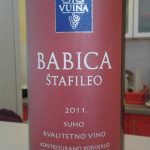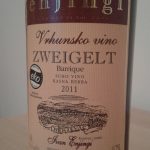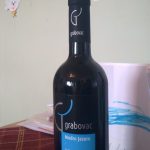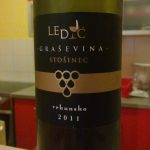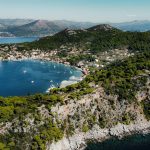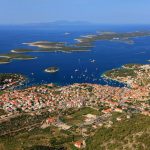Harvest: 2009
Producer: Vina Legović
Location: Kaštelir/Istria
Serving temperature: 12-14 Celsius
Gastro recommendation: baked grouper
Glass: Vinum Bordeaux Riedel Glass
Rating: 9,2/10
Retail price: 135,00 kuna (at the producer)
Running a winery is a complex, uncertain and stressful job, although it can bring about many great moments, but also great disappointments. During the last twenty five years of existence, the new Istrian wine scene is firmly on its feet and has become an example to all winemakers in Croatia. Istria winemakers wisely learned from advanced colleagues in neighbouring sub regions, Goriška Brda and Friuli, who were always open and well intended, which unfortunately cannot be said for the closest Slovenians from Kras. One well organised winery markets at least four wine labels, a base wine or “bag in box,” a quality line for the wider audience, superior line and something extra that best sounds as the Spanish term “reserva de la familia,” on the market only in especially good harvests. Recently we shared our view of the great Legović Nobile Cuvee Noir, a wine from the highest label in this small winery, and now it’s time for the white wine from the Nobile label, cuvee Blanc, both being equivalent to “reserva de la familia.” This aged wine was made from 50 percent Istrian Malvasia, 40 percent Chardonnay and 10 percent Sauvignon Blanc.
The Malvasia was harvested in mid September, then macerated for eight days, while Chardonnay and Sauvignon Blanc were left on vines until attacked by Botritis in the beginning of October. After the harvest they were vinified together, without maceration, joined in stainless steel and left for long aging in tono barrels of 500 litres for 72 months. The wine was bottled eight months ago. It has a lovely colour of old gold, it is clear and dense. While the glass is still the intensity of the scent is pronounced, the scent being fine and pleasant, although gradually opening. The wine wasn’t decanted, but allowed to gradually develop in the glass. On the first nose there are ethereal notes such as meadow honey and bees wax, later on dry grass. Next comes a quince compote, followed by a note of reduced orange, completed with a little toast and dry apricot, so the scent complexity is rich. The wine is dry, partly warm and lovely soft and rounded, partly fresh, with mild tannins and tasty minerality as well as a full body. The wine seems balanced, with pronounced taste intensity, with a repeated note of honey and dry apricot in the after taste. The wine is harmonious, drinkable and in excellent form, to be consumed with baked fish such as a grouper.
For the original and more from Glas Istre, click here.



